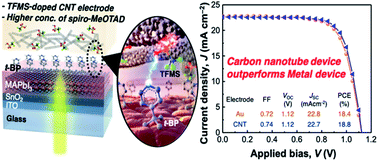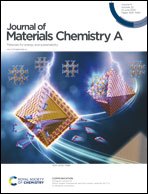*
Corresponding authors
a
Department of Chemistry Education, Graduate School of Chemical Materials, Institute for Plastic Information and Energy Materials, Pusan National University, 63-2 Busandaehak-ro, Busan 46241, South Korea
E-mail:
il.jeon@spc.oxon.org
b
Department of Mechanical Engineering, The University of Tokyo, 7-3-1 Hongo, Bunkyo-ku, Tokyo 113-8656, Japan
E-mail:
matsuo@photon.t.u-tokyo.ac.jp, maruyama@photon.t.u-tokyo.ac.jp
c
Nanomaterials and Nanotechnology Department, Advanced Materials Division, Central Metallurgical R&D Institute (CMRDI), P.O. Box 87 Helwan, Cairo 11421, Egypt
d
Canatu, Ltd., Konalankuja 5, FI-00390 Helsinki, Finland
e
Department of Applied Physics, Aalto University School of Science, P.O. Box 15100, FI-00076 Aalto, Espoo, Finland
f
Institute of Materials Innovation, Institutes of Innovation for Future Society, Nagoya University, Furo-cho, Chikusa-ku, Nagoya 464-8603, Japan
g
Energy NanoEngineering Lab., National Institute of Advanced Industrial Science and Technology (AIST), Tsukuba, Japan



 Please wait while we load your content...
Please wait while we load your content...